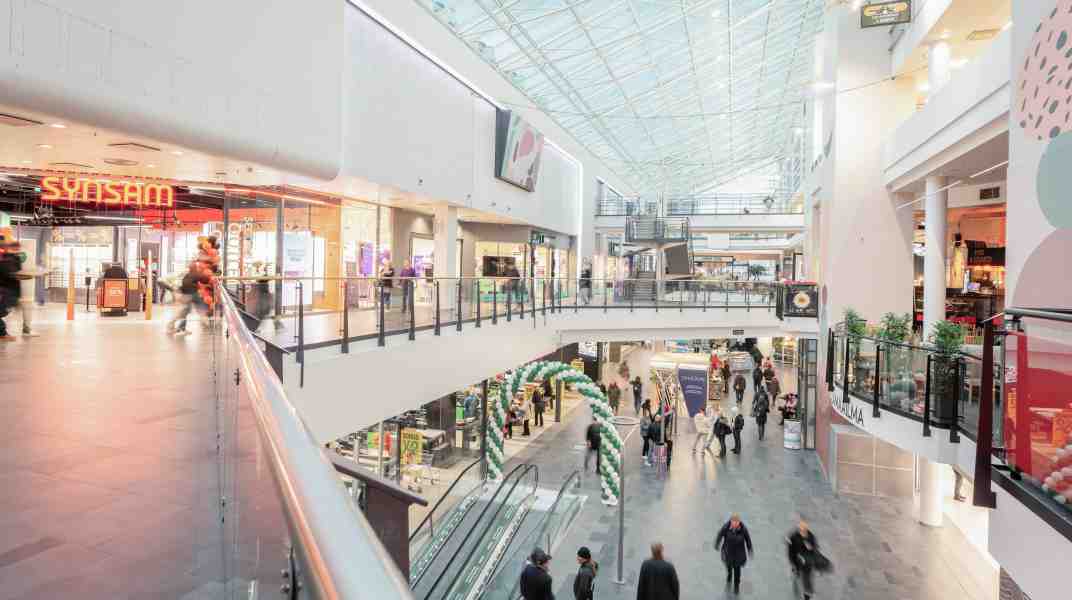The young people of today have higher expectations of themselves and their surroundings than perhaps any other generation before them. They are growing up with the whole world as their marketplace – a world they only know to be digital.
It should come as no surprise to anyone who operates in retail that technology needs to drive the shopping experience forward. In order to succeed in this, you need to know the consumer of today and tomorrow. At the same time, the physical encounter in a store should not be undervalued. Physical retail and shopping centres are still preferred by the young. But – and this is a big ‘but’ – retailers and shopping centre owners must deliver on young people’s expectations.
Many retailers have begun to work methodically on insight and analysis to map and better understand the young generation of shoppers who are best known as Generation Z or Gen Z – a generation born in the late 1990s and early 2000s. What are Generation Z like as consumers? How is Generation Z changing consumer behaviour?
Looking into the crystal ball: what influences Generation Z consumer behaviour?
The Norwegian polling company Opinion has produced a comprehensive report (2019) on youth that uncovers what influences the habits and attitudes of young people today aged 15–29 years old. The report describes the most important characteristics of young people today – and perhaps even more importantly, tomorrow.
‘Young people are growing up in a world where they have access to an enormous range of products and services in most categories. At the same time, they are often finding that price and quality are not necessarily mutually exclusive. Different digital platforms provide them with access to endless products from around the world for a cheap price. The emerging sharing economy is also persuading more people that renting things is just as good as owning. Recommendations online mean they rarely have to make their own choices,’ says Tove Botnen, Project Manager for UNG 2019 at Opinion.
The surveys have been carried out in Norway, but the same trends can also be seen in neighbouring Nordic countries.
‘The young are also an aesthetically informed generation. Us “older” people grew up with pine furniture from IKEA. They’re growing up being able to buy designer furniture by the world-famous Tom Dixon at IKEA. They have high expectations when it comes to sensual and beautiful expression. And it is precisely because of those high expectations of products and brands that brands and retailers need to deliver personalised solutions with a good range and quality that is perfect for ME, at a good price – physically and digitally,’ says Botnen.

New rules of retail: invest and innovate – or die
The changes taking place in retail are generating uncertainty, and there is no doubt that the industry is facing brand new challenges. At the same time, it is important to remember that, as history shows, change is constant. Sometimes, it is worth looking into the rear-view mirror. As they say, to understand the future, look to the past.
One thing we see historically is that periods of uncertainty precede and drive innovation. This was true during the emergence of the Renaissance and industrialisation, for instance.
An example of a retailer who is investing and innovating is Clas Ohlson. With 100 years of pedigree, they have carried out analytical and strategic work to prepare for the next 100 years. These plans consist of a digital foundation, where people (both customers and employees) are part of the solution. Three key points can be drawn from this:
1) Develop a unique customer proposition: Be more relevant to the customer by offering a more focused product range, where the company more clearly defines their position and offers a complementary service provision.
2) Deliver world-class service: Increase added value for the customer by developing high levels of service by offering enhanced availability and more personalised advice both online and in stores. This will allow the company to build a closer relationship with the customer.
3) Simplify and streamline the business: Introduce a range of initiatives to increase the systematics of product development, purchasing and deliveries, in order to increase cost efficiency and boost speed for the customer.
User experience is everything – and technology is increasingly driving the shopping experience
‘There is nothing that irritates young people more in their digital lives than something not being user friendly and customised. If you cannot provide a good user experience (UX) online – across all devices and platforms – you are immediately disqualified by the young. It does not matter who you are, or how rich your heritage is. If you cannot adapt to young people’s day-to-day mobile experience, you’re out,’ says Botnen from Opinion.
When young people need to shop in a physical store, they much prefer shopping centres over independent stores. This is particularly the case amongst the youngest respondents, which has also been borne out by other international surveys. According to a research study by Euclid Analytics (2017), the desire for a brick-and-mortar store remains intact. Generation Z still prefers to shop in a store versus online. However, they want retailers to understand that technology must drive the shopping experience.
Young people perceive their lives and attention as being spread across countless platforms at any given time. Yes, that sometimes stresses them out, but that is how their world works. When they tackle this hectic daily existence, they expect companies and brands to keep up. They expect everyone to be ready and available for communication at any time. They want the exact goods and services they need to be available precisely when they need them.
It is as simple as that.



